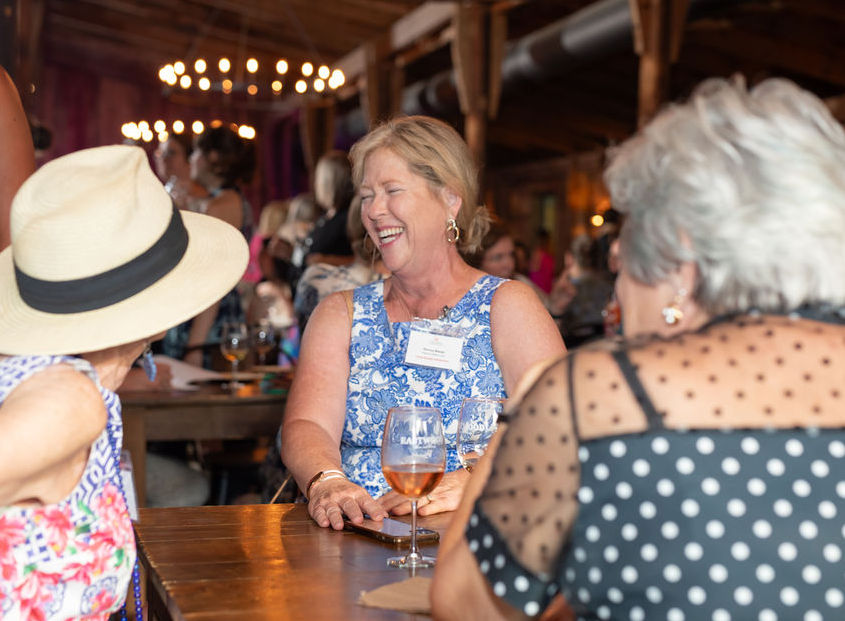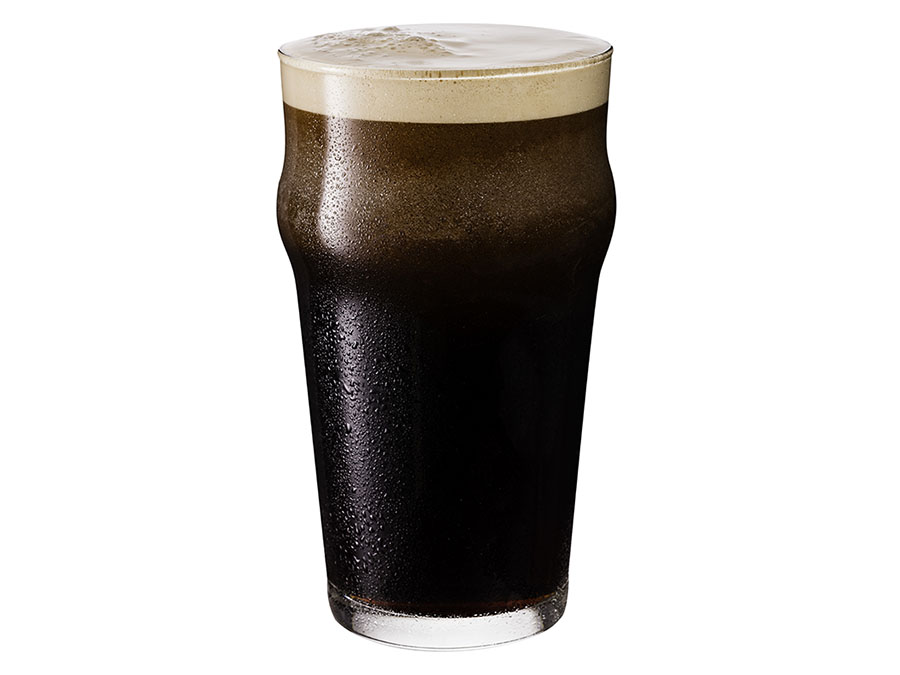The journey to establish Virginia Women in Wine began five years ago with a series of informal get-togethers spearheaded by food and travel writer Nancy Bauer. The gatherings of women who shared a passion for Virginia’s wine industry but found themselves unfamiliar with, or disconnected from, one another grew, and Bauer remembers the moment when the potential for something greater became clear to her. It was during discussions about challenges facing the industry that it dawned on her that “all the answers were in the room.”
The idea that their informal network should be formalized into a nonprofit entity soon emerged. “It became kind of a running joke,” Bauer says. “Shannon [Horton of Horton Vineyards] would always yell across the room, ‘Nancy, you really need to turn this into a 501(c)(3),’ and I’d yell back, ‘Shannon, you have fun with that.’”
On August 6, Virginia Women in Wine, led by Bauer as the organization’s first president, attracted more than 160 attendees for its launch at Eastwood Farm Winery. The event underscores the excitement and support for empowering women in Virginia’s growing wine industry through innovative media and marketing strategies, community-building, networking, leadership development, and promoting career advancement and equity.
Ultimately, a lunch meeting with Horton and Megan Hereford, co-owner of Stuart, Virginia-based Daring Wine & Cider Co., convinced Bauer to move forward. She drafted a grant proposal for the Virginia Wine Board. The proposal was not funded, but it did spark the formation of a dedicated group of women.
“I invited all the women who had ever been to one of our dinners or showed any interest in the idea to put their names on the proposal—50 women signed,” Bauer recalls. This list became the foundation of the organization’s inaugural board, which includes 14 members supported by an additional nine committee members and volunteers.
Bauer estimates that 6,000 or more women are employed in the Virginia wine industry and recognizes that they face some unique challenges. As VWW interviewed individuals to develop an upcoming white paper, issues such as pay inequity, lack of respect, and equipment not designed for women emerged. Additionally, child-care challenges are significant, especially during back to school time, which coincides with the start of grape harvest.
Stephanie Pence, co-owner of Brix & Columns Vineyard in McGaheysville, highlights some of these unique challenges, noting that physical size and strength can sometimes require creative workarounds. She says there is often a reaction of surprise when she’s seen driving her tractor, sometimes in a dress, or arriving to unload pallets from a truck. “I’ve received comments like, ‘I thought you were getting your husband to unload this,’” she recalls. For Pence, such moments underscore the importance of community among women in the industry, for bonding and for problem-solving.
This sentiment is echoed by Seidah Armstrong, owner of Unionville’s Sweet Vines Farm Winery, who says, “I love the fact that VWW is essentially saying, ‘Hey, we see you and we support you!’” She notes that there are often isolated parts of the profession where collaboration is limited. VWW can reduce these workplace silos to foster more connection and resources.
“As a former K-12 administrator, I see continuing education opportunities as a huge challenge for women in the industry,” says Armstrong. “VWW will work to make educational opportunities available for women as they navigate key Virginia-specific issues such as the impact of introducing new varietals or working on creative ways to grow tourism and clientele.”
Athena Eastwood, owner of Eastwood Farm and Winery, emphasizes the significance of representation at all levels, including leadership. “I think it’s important for people to be able to look out and see faces like theirs doing the things they dream of doing,” says Eastwood. “It makes it easier to imagine that you can do it too. When you are a woman just getting started, whether you are working in the cellar or serving on a board for the first time, having another woman in the room or at the table with you can be invaluable.”
Reflecting on the importance of formally organizing as a group, Bauer notes, “This board has reminded me how much more you can get done when you work together.” Admitting that she is “smitten” with the new challenge, she finds the prospect that Virginia Women in Wine might outlast her “pretty exciting.”
For more information or to become a member, visit virginiawomeninwine.com.






